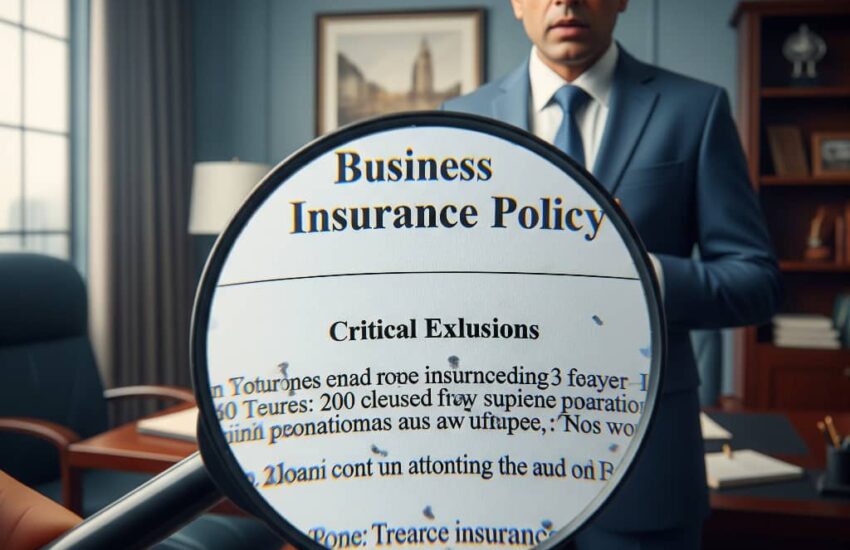Does your business insurance actually protect you? Learn how to decode policy limits, coverage exclusions, and gaps that could leave your company vulnerable. When a kitchen fire forced our boutique bakery to close for repairs, we assumed our property insurance would cover the lost income. That assumption cost us dearly. While the policy covered physical damage, the business interruption coverage had a shockingly low limit that didn’t account for our peak holiday season losses. We learned the hard way that having insurance isn’t enough, you need to understand exactly what it does and doesn’t protect.
Business insurance policies are filled with fine print that can make the difference between recovery and ruin. Here’s how to identify potential gaps before you need to file a claim.
Policy Limits: The Ceiling on Your Protection
Every insurance policy has coverage limits, the maximum amount the insurer will pay for a claim. These limits apply differently across policy types, often leaving businesses exposed in ways they don’t anticipate.
General liability policies might boast a $1 million per occurrence limit, but exclude critical risks like professional errors. Commercial property coverage could severely limit payouts for specialized equipment unless those items are specifically scheduled. Cyber liability policies frequently include sub-limits for notification costs following a data breach that barely scratch the surface of actual expenses.
The dangerous assumption many business owners make is that “having coverage” equals “full protection.” In reality, standard limits are rarely adequate for worst-case scenarios. A $1 million liability limit sounds substantial until you’re facing a multi-million dollar lawsuit that could cripple your company.
Common Coverage Gaps That Catch Businesses Off Guard
Insurance policies contain far more exclusions than inclusions, creating hidden vulnerabilities that only surface during claims. Many policies fail to automatically cover equipment or inventory in transit, leaving businesses exposed when products are damaged during delivery. Contractual liability presents another trap, agreeing to indemnify clients in contracts may void coverage unless specifically negotiated.
Employee dishonesty represents another frequent blind spot, with basic policies excluding theft by staff unless you add fidelity bonds. Reputational harm from defamation or copyright claims often falls through the cracks, requiring separate media liability coverage that many small businesses overlook.
The most expensive surprises occur when businesses assume “all risks” means all risks. One tech startup learned their errors and omissions policy didn’t cover cloud service outages, a crippling omission for their SaaS business model that nearly forced them to close.
Tailoring Coverage to Your Actual Risks

Generic insurance packages rarely fit unique business needs, making customization essential. The process should begin with a thorough risk assessment that identifies vulnerabilities specific to your operations, location, and industry. A Florida beachfront café needs dramatically different coverage than a Colorado ski rental shop, yet many owners simply accept standard packages.
Client contracts frequently mandate additional requirements that standard policies don’t address. Many demand additional insured status or specific liability limits that void coverage if not properly documented. Growth projections also matter, a policy written for your current operations might become dangerously inadequate after expansion.
Understanding your business insurance requires moving beyond checking a compliance box to actively managing risk. By scrutinizing limits, anticipating exclusions, and customizing coverage, you transform insurance from an expense into a strategic asset. The time to discover your policy’s shortcomings isn’t during a crisis, it’s today, when you can still make adjustments that might save your business tomorrow. Remember, adequate coverage isn’t about what your policy says it covers, but what it actually protects when disaster strikes.
References
National Association of Insurance Commissioners. (2024, January 31). Insurance topics: Business interruption & business owner policy. NAIC. https://content.naic.org/insurance-topics/business-interruption-&-business-owner-policy
biBerk. (2024, November 22). Understanding insurance limits and deductibles. biBerk Insurance. https://www.biberk.com/articles/what-business-owners-need-to-know-about-insurance-limits-and-deductibles
Shopify Nigeria. (2022, August 3). What is business insurance and what does it cover? Shopify. https://www.shopify.com/ng/blog/what-is-business-insurance
Embroker. (2024, October 21). What types of business insurance does your company need?. https://www.embroker.com/blog/types-of-business-insurance/
BCS Compliance. (2015, June 15). Guide to business insurance policies. BCS Compliance. https://www.getbcs.com/guide-to-business-insurance-policies-bcs-compliance
Paychex. (2019, October 28). Business insurance 101: What you need to know. Paychex. https://www.paychex.com/articles/business-insurance/business-insurance-101

